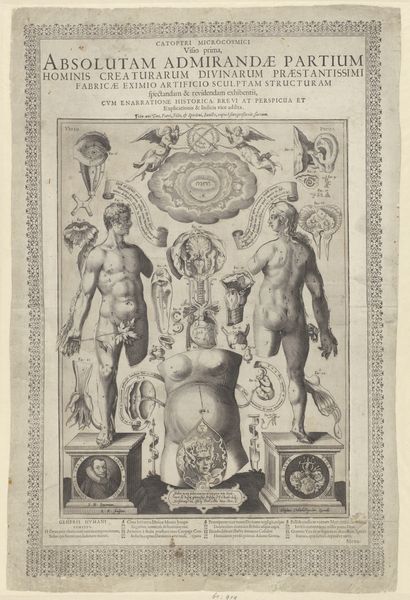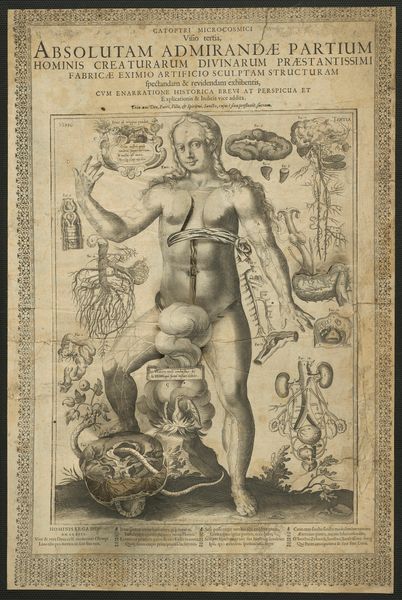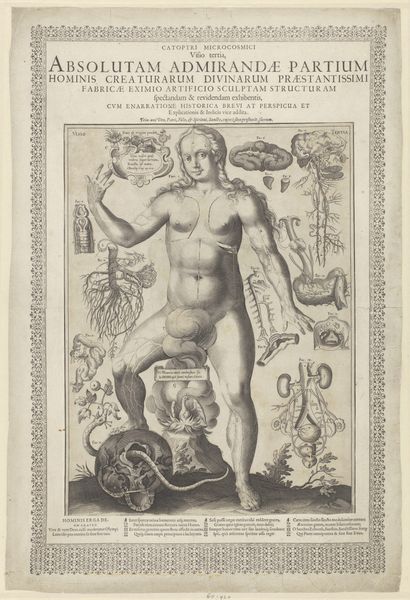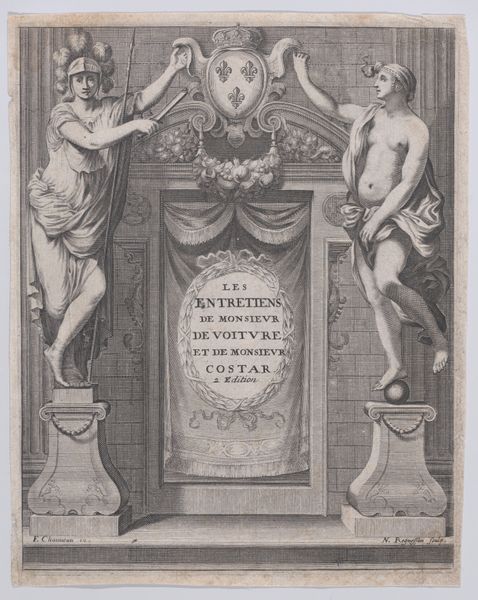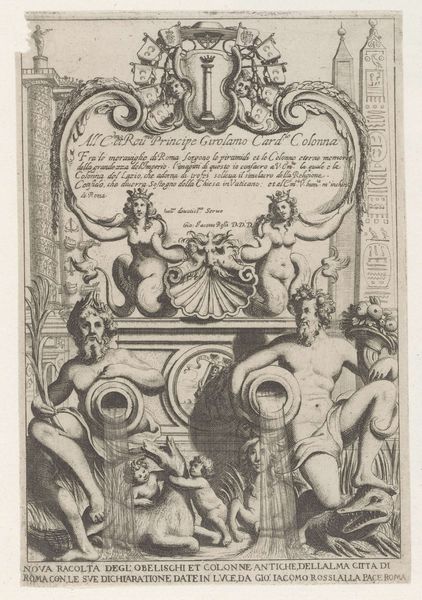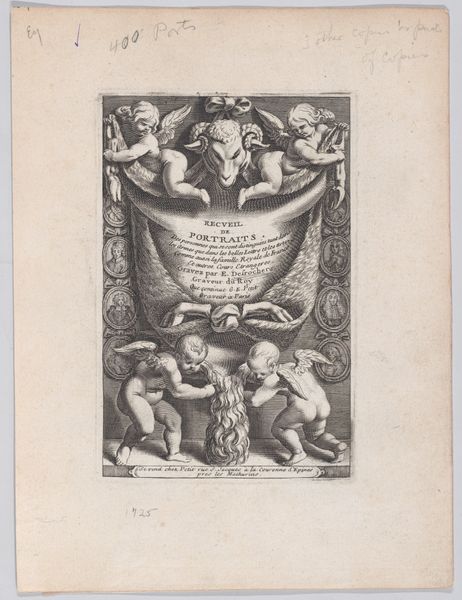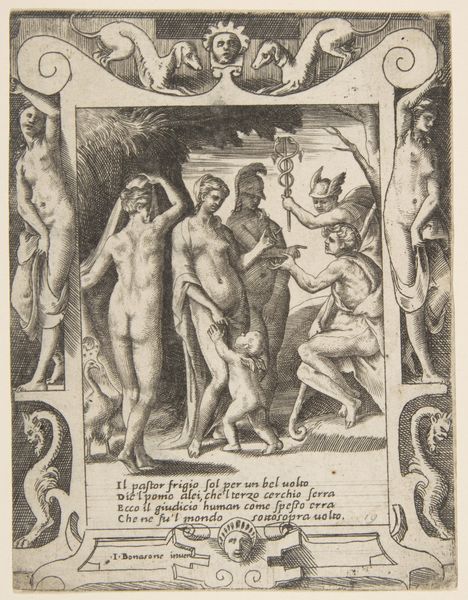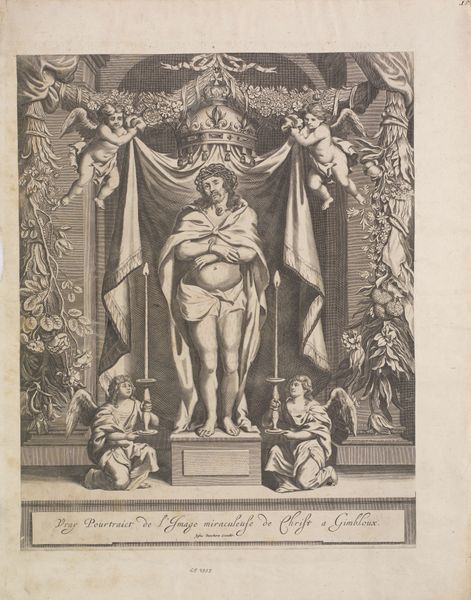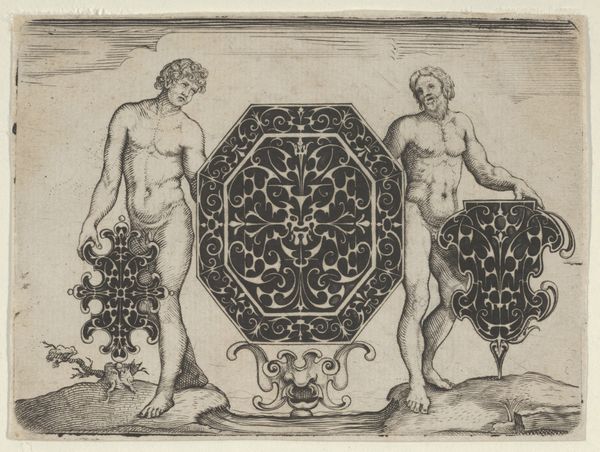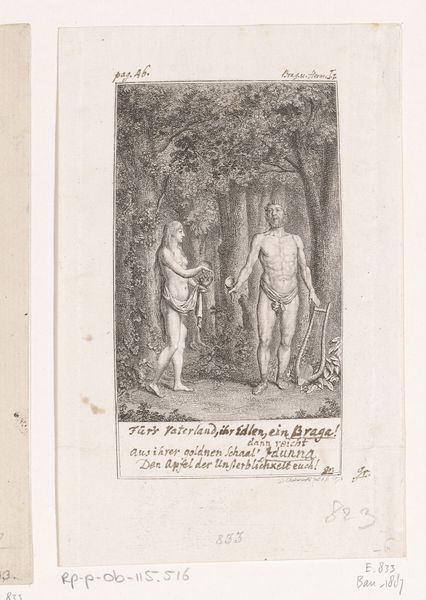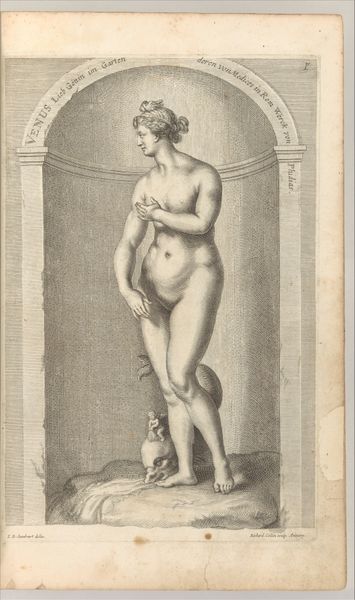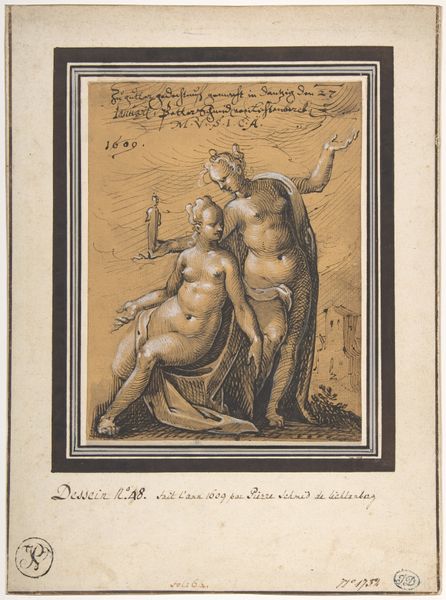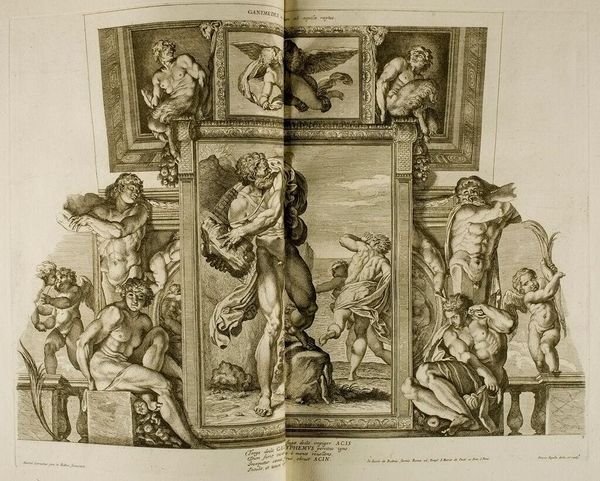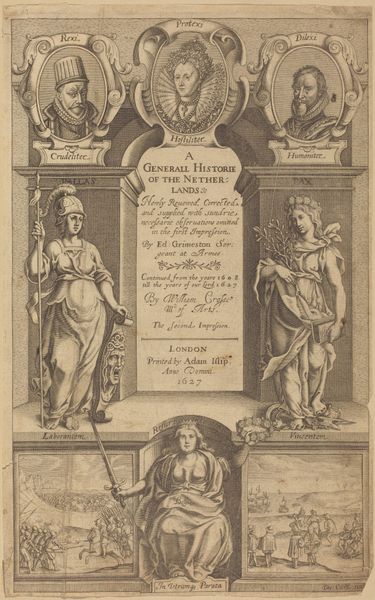
A Survey of the Microcosme or the Anatomie of the Bodies of Man and Woman wherein the Skin, Veins, Nerves, Muscles, Bones, Sinews and Ligaments Thereof are Accurately Delineated, and so Disposed by Pasting, as that Each Part of the Said Bodies Both Inward and Outward are Exactly Represented. Useful for all Doctors, Chyrurgeons, Statuaries, Painters, &c. 1675
0:00
0:00
drawing, print
#
drawing
#
toned paper
#
light pencil work
# print
#
personal sketchbook
#
ink drawing experimentation
#
coloured pencil
#
pen-ink sketch
#
sketchbook drawing
#
watercolour illustration
#
sketchbook art
#
watercolor
Dimensions: Sheet: 15 1/4 × 12 1/4 in. (38.7 × 31.1 cm)
Copyright: Public Domain
Editor: So, this is Johann Remmelin's "A Survey of the Microcosme," from 1675. It's a print, and it looks like a detailed anatomical study of a man and a woman. It's… well, it’s unsettling and fascinating at the same time. What are your thoughts on it? Curator: Unsettling is a good word. Look at how Remmelin presents the body – dissected, almost objectified, yet simultaneously celebrated as this marvel of creation. It speaks volumes about the shifting perspectives on the body in the 17th century, doesn’t it? A period wrestling with scientific inquiry and religious doctrine, with power structures deeply entrenched in controlling bodies, particularly women's. Editor: I see that. The way the female body is presented, especially with what seems to be a pregnant abdomen… Curator: Precisely. Think about the power dynamics at play. Anatomical illustrations, ostensibly for scientific advancement, were often used to reinforce existing patriarchal norms about gender roles, procreation, and even perceived inferiority. How might the gaze of the viewer in 1675 differ from our contemporary reading of this image, considering shifts in feminist theory and body politics? Editor: That’s something I hadn’t considered deeply enough. The 'objective' scientific study actually reinforces cultural biases. Curator: Exactly. It also raises questions about accessibility and knowledge. Who was this print intended for? Was it accessible to women? And how did class intersect with access to this type of information? Editor: It really does make you rethink the role of art in science and society. Thanks, that perspective is incredibly helpful. Curator: And thank you for prompting a richer reading of this work. It's a powerful reminder that art doesn't exist in a vacuum; it's a reflection of and a contributor to the complex social and political landscapes it inhabits.
Comments
No comments
Be the first to comment and join the conversation on the ultimate creative platform.
